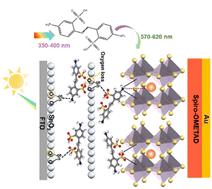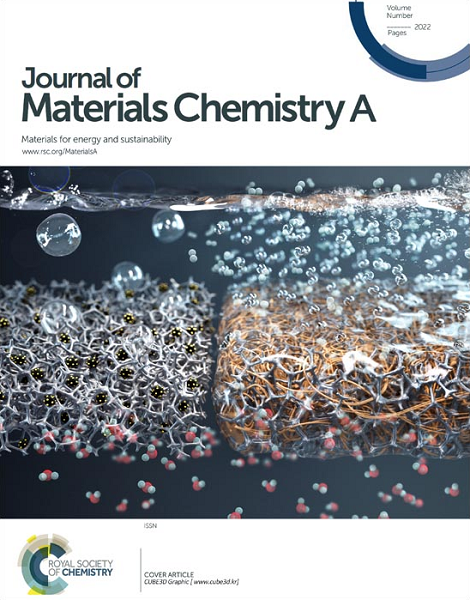Down-converting ultraviolet light using a conductive passivator to enhance the efficiency and stability of perovskite solar cells
IF 10.7
2区 材料科学
Q1 CHEMISTRY, PHYSICAL
引用次数: 0
Abstract
The significant progress of perovskite solar cells (PSCs) in the past decade has shown enormous potential for industrialization; however, several critical issues such as long-term stability and potential lead leakage still need to be addressed. It is a practical challenge to overcome these issues through one approach. Herein, we introduce an ultraviolet absorbent and conductive passivation agent 4,4′-diaminostilbene-2,2′-disulfonic acid (DSDA) into SnO2 to down-convert ultraviolet light into visible light and enhance the conductivity of SnO2, thereby improving the light-stability and performance of PSCs. The amphoteric DSDA molecule with four functional groups can also passivate defects on the surface of SnO2 films, affect the crystal growth of the perovskite layer, and provide in situ protection against lead leakage. Our results show that the power conversion efficiency (PCE) of the PSCs increases evidently from 22.95% to 25.09% owing to the simultaneous enhancement of the photoelectric properties of SnO2 films and the critical SnO2/perovskite interfaces by adding DSDA into SnO2 films. Importantly, the DSDA-optimized PSCs without encapsulation exhibited enhanced operational and UV-light stability, as well as in situ fixation of leaked lead ions. This simultaneous enhancement of both optical and electrical properties of functional layers via adding a multifunctional organic compound provides an efficient strategy to effectively improve the efficiency and long-term stability of PSCs.

利用导电钝化剂下转换紫外线,提高过氧化物太阳能电池的效率和稳定性
过去十年来,过氧化物太阳能电池(PSCs)取得了长足进步,显示出巨大的产业化潜力;然而,一些关键问题仍有待解决,如长期稳定性和潜在的铅泄漏。如何通过一种方法克服这些问题是一个实际挑战。在此,我们在二氧化锡中引入了紫外线吸收剂和导电钝化剂 4,4′-二氨基二苯乙烯-2,2′-二磺酸(DSDA),将紫外线下转换为可见光,并增强二氧化锡的导电性,从而改善 PSCs 的光稳定性和性能。具有四个官能团的两性 DSDA 分子还能钝化 SnO2 薄膜表面的缺陷,影响过氧化物层的晶体生长,并提供防止漏铅的原位保护。我们的研究结果表明,由于在二氧化锡薄膜中加入 DSDA 同时增强了二氧化锡薄膜的光电特性和临界二氧化锡/包晶界面,PSCs 的功率转换效率(PCE)从 22.95% 明显提高到 25.09%。重要的是,DSDA 优化的无封装 PSC 具有更高的工作稳定性和紫外光稳定性,并能在原位固定泄漏的铅离子。通过添加多功能有机化合物同时增强功能层的光学和电学特性,为有效提高 PSCs 的效率和长期稳定性提供了一种有效的策略。
本文章由计算机程序翻译,如有差异,请以英文原文为准。
求助全文
约1分钟内获得全文
求助全文
来源期刊

Journal of Materials Chemistry A
CHEMISTRY, PHYSICAL-ENERGY & FUELS
CiteScore
19.50
自引率
5.00%
发文量
1892
审稿时长
1.5 months
期刊介绍:
The Journal of Materials Chemistry A, B & C covers a wide range of high-quality studies in the field of materials chemistry, with each section focusing on specific applications of the materials studied. Journal of Materials Chemistry A emphasizes applications in energy and sustainability, including topics such as artificial photosynthesis, batteries, and fuel cells. Journal of Materials Chemistry B focuses on applications in biology and medicine, while Journal of Materials Chemistry C covers applications in optical, magnetic, and electronic devices. Example topic areas within the scope of Journal of Materials Chemistry A include catalysis, green/sustainable materials, sensors, and water treatment, among others.
 求助内容:
求助内容: 应助结果提醒方式:
应助结果提醒方式:


